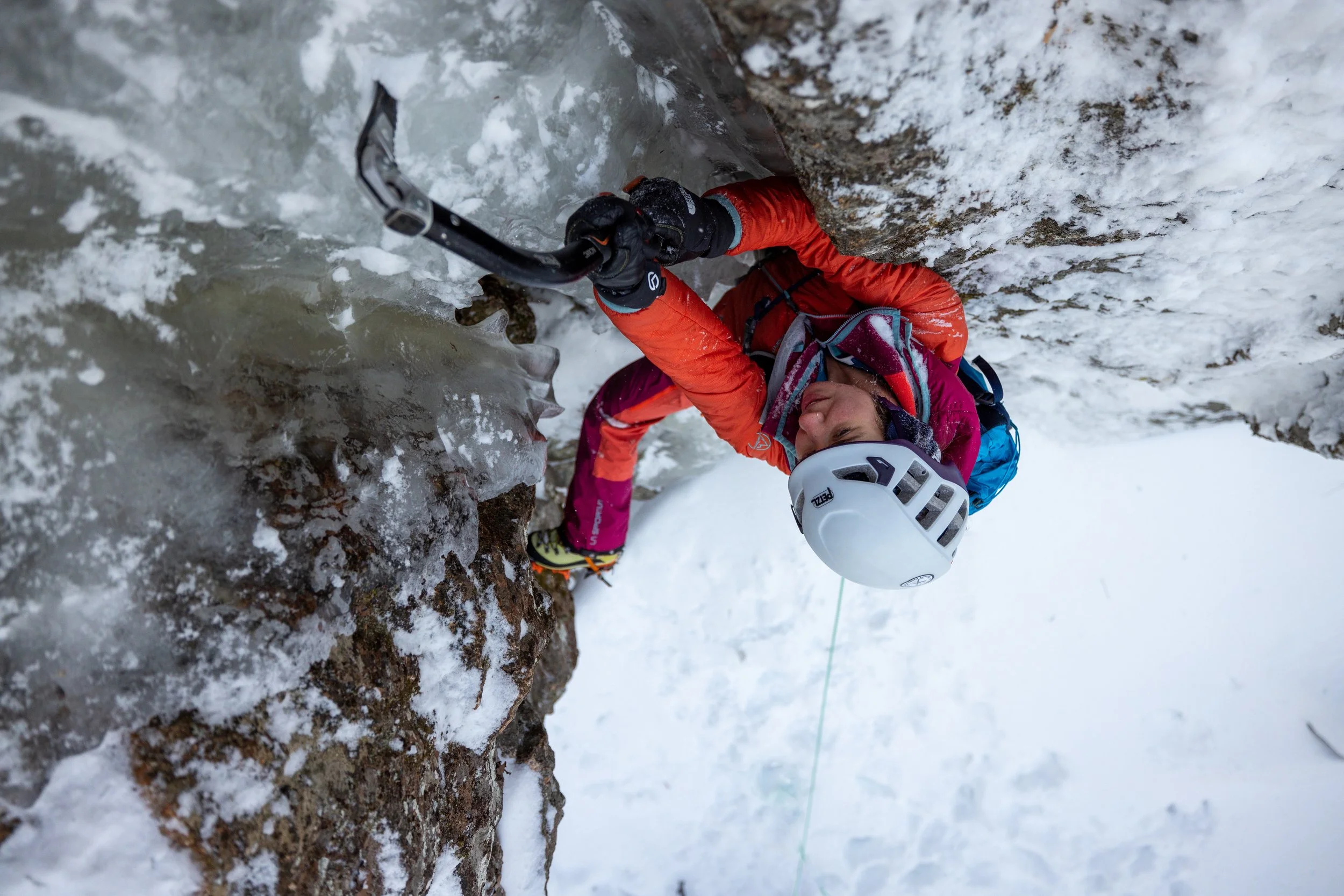The climb that I did [Saturday, Feb. 21], was Looking Glass Falls, one of the classic falls of the Pisgah National Forest with many visitors every year. I pass the falls frequently, as most of the climbing guiding and instruction I do is on Looking Glass Rock, so I am always yearning to climb it.
Rarely do we have temperatures like we have had in the last week that enable waterfalls with as much flow volume as Looking Glass to freeze. We have had some of these temps in the past few years but, due to the nature of my job and traveling to far off places, I wasn’t able to catch the falls “in shape.” Feb. 21 wasn’t perfect either: the ice pillar at the beginning wasn’t touching the ground, the ice was very chandeliered and somewhat sun-baked from the day before. With the rain and warmer temps forecasted for later that day and into the night, I had to give it a go, as it would be gone by morning.
So Travis Weil and I decided to give it a shot. The first few moves off the ground, we climbed by using the rock behind the ice until I could gain the pillar. This is known as mixed climbing. Once I got a good pick placement into the pillar, I knew I would be going to the top, as there likely would be know way to retreat. After only a few moves of rock, I committed.
The pillar felt good, but I couldn’t really swing into it because I knew it wouldn’t take much of a beating for it to fall off. I wrapped my feet around the ice pillar, as I couldn’t kick for the same reasons. This put most of the weight on my arms, and I had to make sure my picks were in solid placements so as to not rip through the less-than-ideal chandeliered ice.
Once I got over the pillar, I tried to place an ice screw, but all the ice was either to thin or not solid enough. I went ahead and placed a really bad screw and moved on like it would hold if I fell.
When the strenuous climbing was over and I was able to put more weight on my feet, the quality of ice was less good and made of what we call “snice” — a snow and ice mixture that’s very aerated and doesn’t give great purchase with the ice tools. The snice was made from the spray from the falls. I moved through this section delicately and with precision, making sure that if a tool or foot would give way I would have plenty of holding power with the others.
I made my way past the vertical section and onto the sloping and lower-angled ice at the top. Adrenaline started to overwhelm me, as it does many times at the top of climbs that I have longed to do. I knew I had to keep this at bay and stay focused on the climb until I was clipped to the anchor and safe. I rearranged protection (three really bad ice screws) at the top to prevent a swing if Travis fell and clipped myself to the largest tree I could find!
A loud “Whoop!” definitely came out as the hazards faded and the pinnacle achievement was accomplished.
This climb pushed the line on the margins of safety that I usually keep. I was able to see the possibility of climbing the line from the ground. I knew I had the reserves of skill and strength from many years in the mountains and the training I had been doing in the previous months to deal with the given situations and cruxes that I would face. I was not cheated. The climb made me focus physically and mentally until the last step onto the frozen moss at the top. Like the perfect wave for the surfer, this climb was something climbers dream for.








































